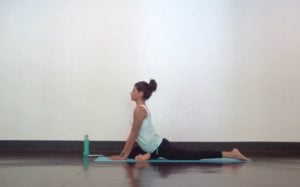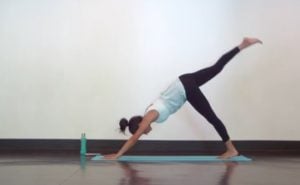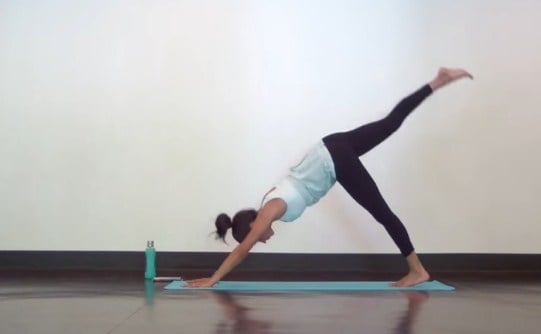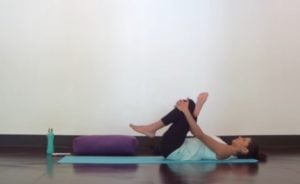The sciatic nerve is the largest nerve in the body and is made up of various nerve endings that originate in the spine.
The sciatic nerve starts in the area where the spine ends, goes through the buttocks and some areas of the thigh to the knees, when it reaches the knees this is distributed in the common fibular nerve and the tibial nerve, and this is how it reaches the feet.
In all these areas mentioned it is possible that this nerve causes some pain accompanied by stitches, electric shocks and tingling.
Sometimes the sciatic nerve becomes inflamed, but the good thing is that there are a variety of ways to reduce or relieve it, either with the use of medications, physical therapy or exercises such as yoga.
In fact, many of the injuries that can occur in the area below the spine, can influence each nerve that is connected to the sciatic nerve, leading to the person feel a lot of pain along the entire path of the nerve.
The sciatic nerve helps people feel, gives strength to the legs, and also contributes to reflexes. It makes it possible to connect the spinal cord with some muscles in the thighs, legs, and feet. For this reason, when there is a problem with the sciatic nerve, it can be felt in different areas such as the ankles, toes, feet and legs.
Types of Sciatic Nerve Pain
There are different types of sciatic nerve pain, which will be determined by the person’s symptoms. These include:
- Sciatica of the root of nerve S1: This is the pain originating in the lowest area of the spine, in addition to pain it is possible to numb the muscles of the feet. This can make the person feel weak and can not even elevate the heel of the floor or walk on tiptoes. There is also a possibility that the person may have a decrease in some reflexes.
- Sciatica of the root of nerve L4: Its location is the lower spine, the pain is usually accompanied by numbness of the lower muscles of the legs and feet, may even make it difficult for the person to move to be placed on tips, also reduces the knee reflex.
- L5 Root Sciatica: When this area is affected, the person with the pain is most likely to have a weakness in the big toes and ankles, making the feet look saggy. In addition, the muscles at the top of the foot tend to become numb, especially those that are part of the big toe.
Causes of Sciatica
Sciatica refers to pain that occurs along the entire path of the sciatic nerve, which runs from the lower spine, buttocks, and through each leg. In most cases, sciatica usually affects only one side of the body.
In most cases sciatica is present when there is a herniated disc, a narrowing of the spinal column, a spur in the spinal column, etc. as all this can compress the sciatic nerve thus generating pain, inflammation and numbness.
Sometimes the pain of sciatica is considered a medical emergency, but this does not always happen as there are exceptions in which the nerve can be improved with some treatment of only weeks.

Sciatica occurs because of the sciatic nerve that is compressed, for the various reasons explained above. Sometimes even diabetes can cause a deterioration of the nerve and therefore begin to present discomfort in it. Although there are also some risk factors that increase the possibility of suffering from sciatica which are:
- Being obese: When a person is obese, it means that the spine will have to carry more weight than it should normally, this contributes to changes in the spine and therefore this leads to sciatica.
- The profession or trade: Sometimes you do work in which you have to turn your back repeatedly, move very heavy objects, or even drive a car for long periods of time; all this is related to sciatica even though it is not yet fully proven.
- Diabetes: A disease that greatly influences the way the body uses blood sugar, increasing the chance of nerve damage.
- Sitting for a long time: When someone sits for very long periods of time, or has a lifestyle that opts for sedentary lifestyle, they have a higher risk of suffering from sciatica compared to a physically active person.
- Age: Over time, some changes occur in the spine, and herniated discs and spurs often develop, which are major causes of sciatica.
Yoga exercises for sciatica
Knee to chest
Lie on your back, move your knee until it touches your chest while keeping the other leg straight on the floor. You have to put pressure on the legs that you bend on your chest. You hold this posture for 30 seconds.
The pigeon on its feet
This is a posture that is characterized by its great simplicity to execute, but this does not mean that it is less effective, because really its efficiency is much to relieve pain. The only thing you will have to do is to have a table or surface close by that is at the level of your hip, then mount one of your legs on top of the table and incline your body towards the front, then repeat this procedure with the opposite leg.

Stance of the big toe
You’ll have to lie on the floor on a mat, put your legs straight and put them together. Then raise your left leg and place a strap or leg on the outside of your foot.
You have to stretch your leg as much as possible and then while keeping your legs stretched try to pull down the rope in such a way that try to bring the leg closer to your nose. To finish, only hold the rope with your left hand and slowly lower the leg to the left so that it is perpendicular to the body. These steps should be followed equally with the opposite leg.
Seated twist
You have to sit stretching your legs, then bend one leg and place it on top of the other. You will have one leg stretched, you must bend it so that the heel touches your buttocks. When you feel comfortable with the posture, it’s time to slowly turn your body in the direction of the leg you put on top.
This Other Extraordinary Publication «4 Magnificent Upper Back Yoga Stretches» You May Be Interested Come In and Check It Out!
I hope you liked the publication of this article emphasizing «4 Excellent Yoga Stretches for Sciatic Nerve Relief «. You can share your opinions and experiences with me in the comments section.


